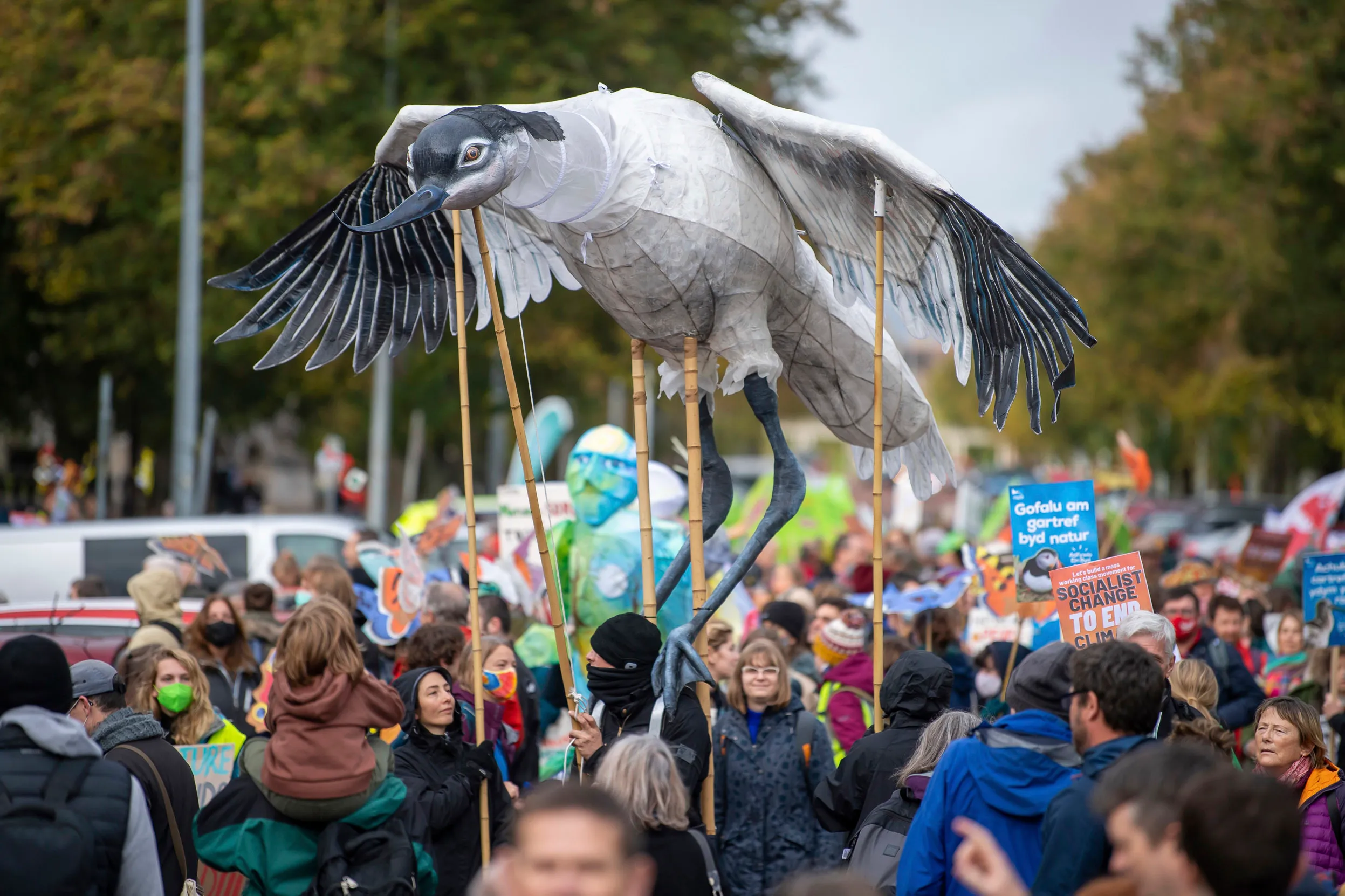Advice
Other ways to fundraise
Run, walk, cycle, bake or sell for nature. Whether you're a hare or a tortoise we'd love you to support the RSPB as you ...
Discover what campaigning is and how you can get involved with RSPB campaigns.

Campaigning is working towards a goal that ultimately changes political policy and law. And we know what we’re doing! The RSPB has been campaigning for nature since 1899 – the year we were formed. We’ll keep fighting, because nature needs us more than ever. Tackling the nature and climate emergency won’t wait.
Because it works! The RSPB’s founders successfully campaigned against the use of feather plumes in women’s hats in the fashion industry, leading to the Plumage Prohibition Act 1921. In 2003, we pushed back against a proposal to build a new airport at Cliffe in North Kent – an area that’s internationally important for birds. In 2007, the RSPB and BirdLife International joined forces to fight for a ban on the imports of wild birds in the UK. In 2014, after years of campaigning, the Airports Commission rejected proposals to build an airport on the Thames Estuary, and in 2016, we worked to make sure that EU laws protecting nature would not be weakened after Brexit.

The nature and climate emergency is the biggest threat in our lifetime. But the good news is, we can do something about it. We just need to act now, and that means everybody.
As the climate warms, both people and wildlife will be affected. More extreme weather will cause droughts, wildfires, flooding and irreversible damage to nature. Already, one in ten wildlife species is at risk of extinction, and more than half of UK wildlife is in decline.
We need to solve the nature and climate emergency, together.
There is hope. Many natural habitats, including peatlands, native forests and oceans can help. They lock in carbon, which will help keep global warming below 1.5 degrees C. This is the key tipping point – any rise in temperature of more than this will cause untold damage. In addition, the recovery of these amazing habitats will mean that species can thrive again.
Everyone can get involved. We need you to call on Government to create and enforce new climate policies and help our nature reserves cope with the effects of climate change.
Join the fight for nature’s future by signing up as an RSPB campaigner. You’ll get guidance and support and be the first to know about opportunities to take action online and in your community.
MPs love to hear from local people. Meeting with your MP means you can raise issues with them directly, and hear what they’re doing for nature. They’re often in their constituency on Fridays and at weekends. Check their website to see if they offer any constituent surgeries, as these are a ready-made forum. Make sure you plan ahead and make notes of the key things you want to say. It might be useful to remind yourself of the latest information. If you’re not sure who your local MP is, check theyworkforyou.com.

Spread your message far and wide!
This can be tricky territory, so be open, honest and transparent. Actively engage with charities, businesses, politicians and anyone else who might be able to help. Following hashtags is a useful way to stay up to date. You have sole responsibility for what you post online. So, remember to respect others, be polite and keep in mind that anything you publish will become public information. Respect others’ privacy, and make sure you stick to the facts. Remember, the more accessible your message, the more people will see it – write in plain English, caption your pictures, and use clear fonts.

The old-fashioned ways still work. Remember you’re speaking as someone who cares about nature, not someone from the RSPB. Try to grab the editor’s attention in the first paragraph. This is where all the most useful information needs to be – sum up your story in around 30 words, and remember to answer who, what, why, where and when? Use a quote in everyday language from a passionate individual, and create an eye-catching headline that describes the story. Remember to include contact details at the end, too. Add a photo if you can, as they often sell a story.
Bringing people together helps make your message loud and clear. The easiest way to start is with the people you already know. Then you can involve people they know and before you know it, you’ll have a campaigning team. You can also use local Facebook and WhatsApp groups and post on social media to spread the word. There might be relevant groups in your local area already – now’s a good time to link up with them and work together.

Remember you’re responsible for the safety of your attendees at any event you organise. Assess the risks and follow safeguarding measures – make sure any under 16s are accompanied by an adult, and that you and other attendees are never alone with a child or vulnerable adult. Think about what you’ll do in case of an emergency, and plan in advance to make your event as accessible as possible.